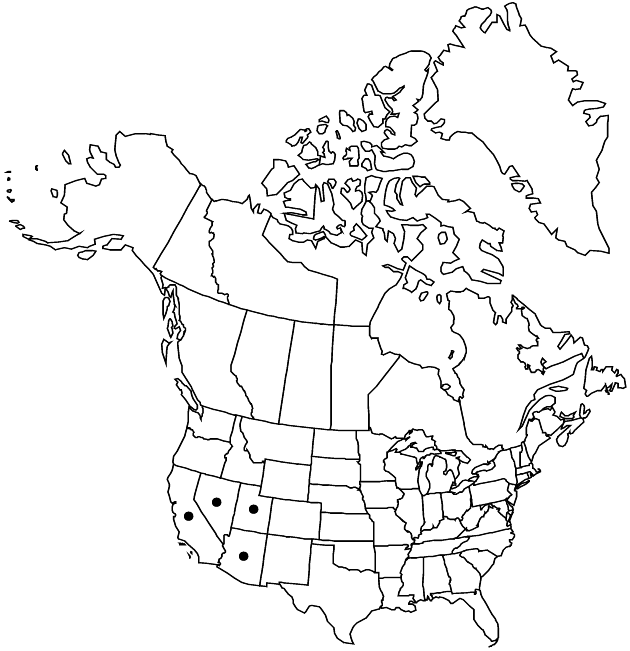Perityle emoryi
in W. H. Emory, Not. Milit. Reconn., 142. 1848.
Annuals (sometimes persisting), 2–60 cm (delicate or robust, stems relatively few-to-many, erect or spreading); puberulent to hirsute, glandular-pubescent. Leaves: petioles 3–45 mm; blades ovate, cordate, suborbiculate, or triangular, 17–60 × 10–50 mm, margins deeply toothed, lobed, cleft, or divided, lobes indented to irregularly dissected. Heads borne singly or in corymbiform arrays, 4–10 × 4–10 mm. Peduncles 1–70 mm. Involucres campanulate to hemispheric. Phyllaries 10–20, lanceolate or oblanceolate to ovatelanceolate, 4–6 × 1–2 mm. Ray-florets usually 8–14, rarely rudimentary or 0; corollas white, laminae oblong, 1–4 (–6) × 1–3 mm. Disc-florets 40–100+; corollas yellow, tubes 0.7–1.3 mm, throats tubular to tubular-funnelform, 0.8–1.3 mm, lobes 0.1–0.2 mm. Cypselae suboblong, oblanceolate, or subcuneate, (1.5–) 2–3 mm, margins thin (not calloused), long or short-ciliate; pappi 0 or of 1 antrorsely to retrorsely barbellate bristles 1–3 mm plus crowns of hyaline, laciniate scales. 2n = 65–72 or 100–116.
Phenology: Flowering year round (depending on latitude).
Habitat: Coastal bluffs, desert plains, slopes, washes
Elevation: 10–1500 m
Distribution

Ariz., Calif., Nev., Utah, Mexico, South America (Chile), South America (Peru)
Discussion
Perityle emoryi is a widespread polyploid of diverse habitats and is often weedy. It is variable; none of the variation appears to have population significance and does not require taxonomic recognition. The range of P. emoryi appears to be gradually expanding.
Selected References
None.